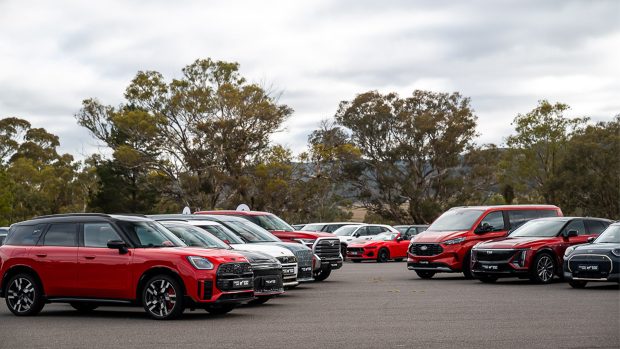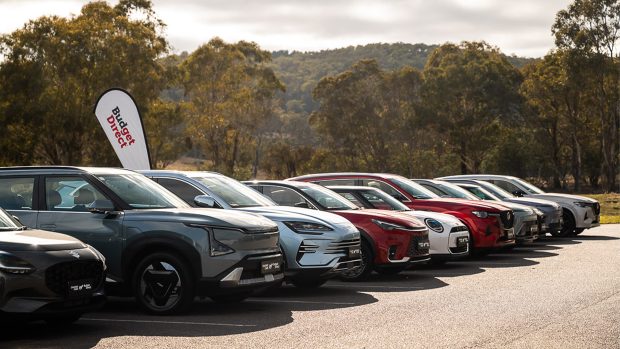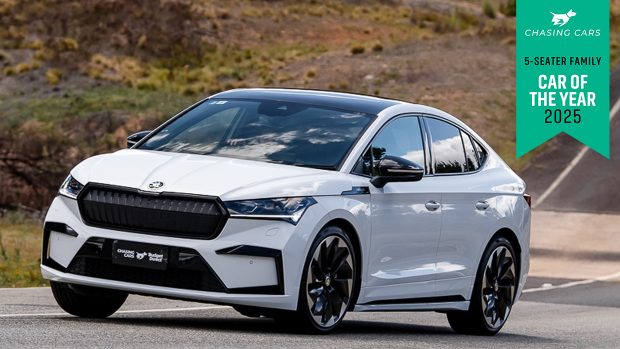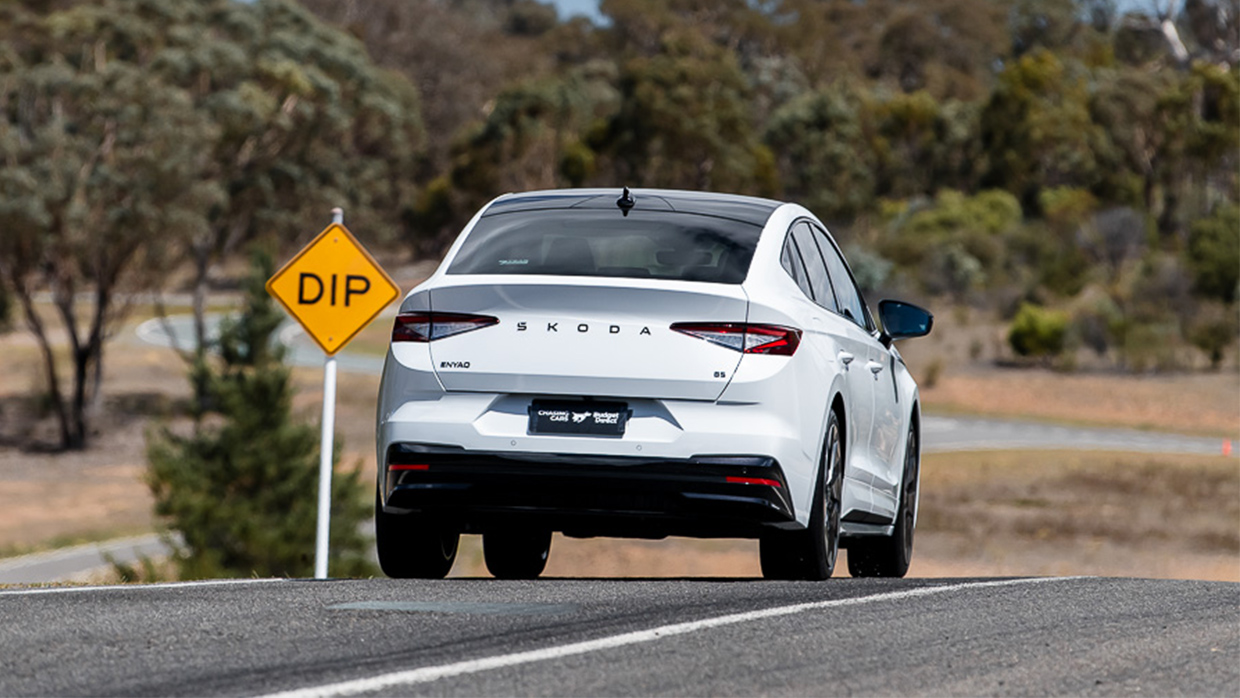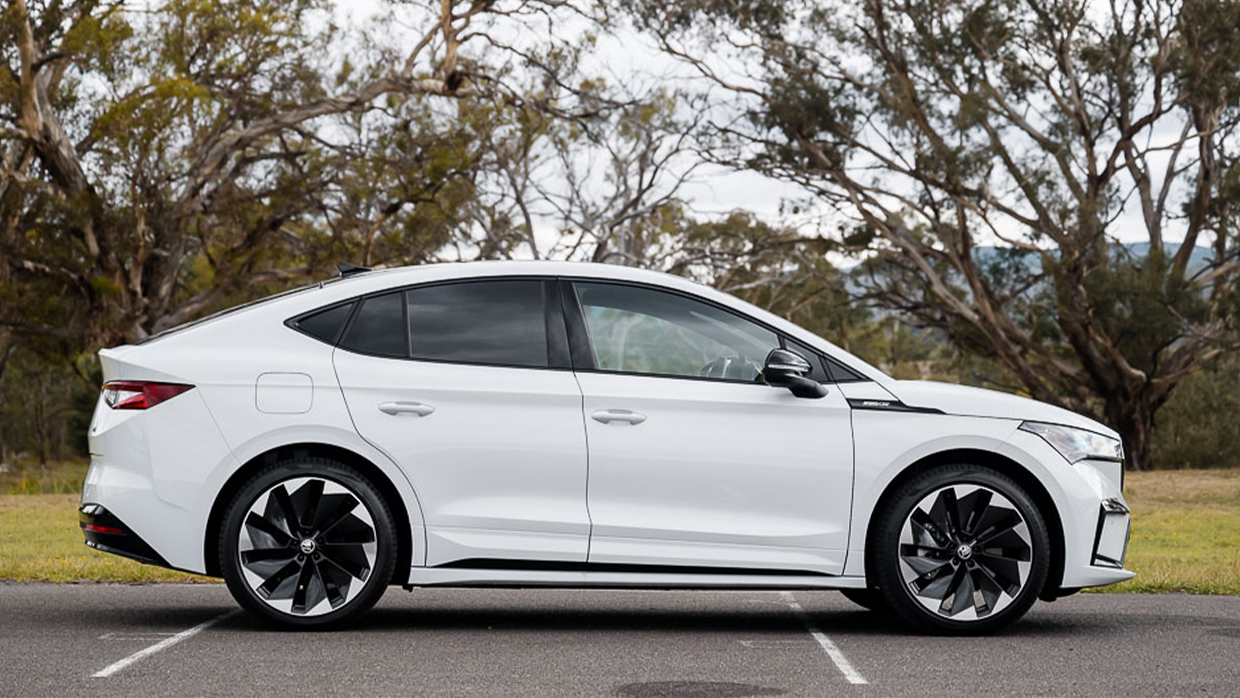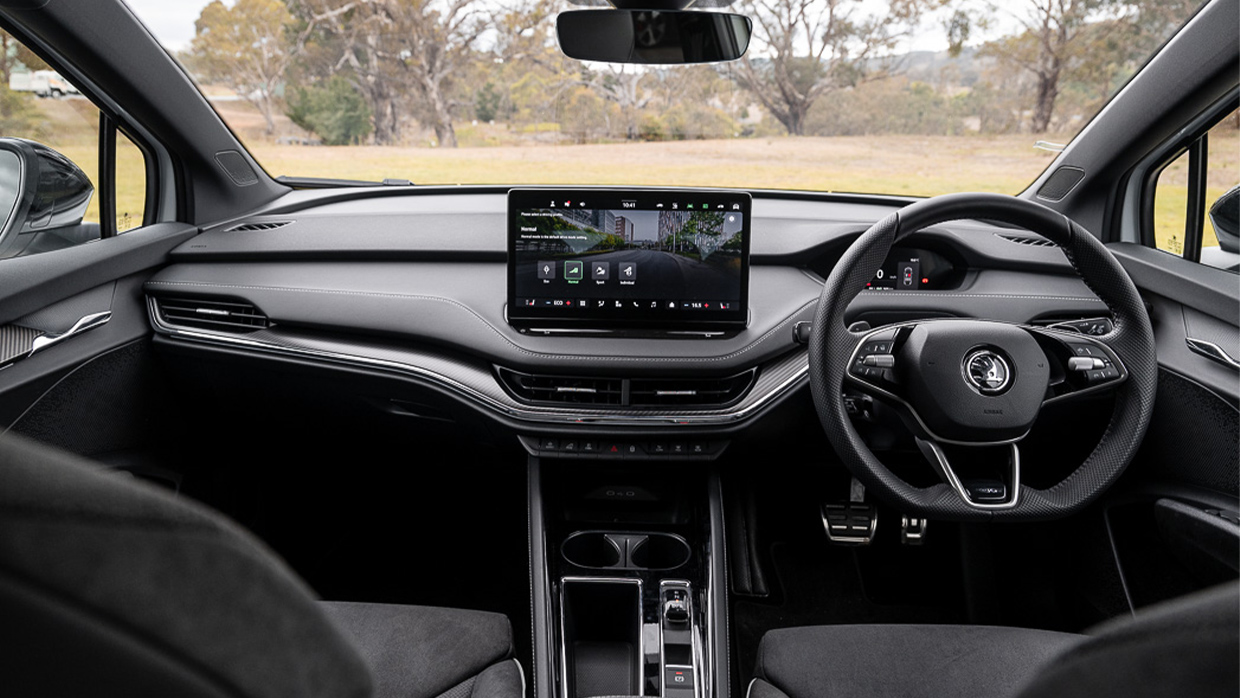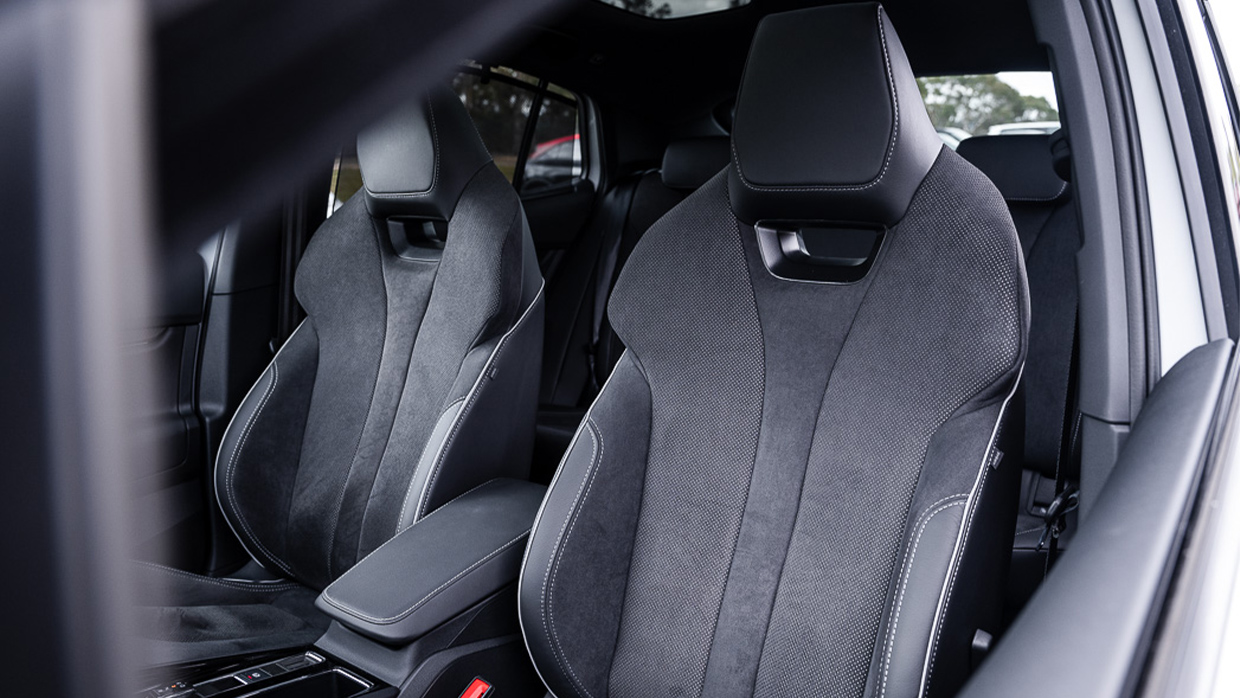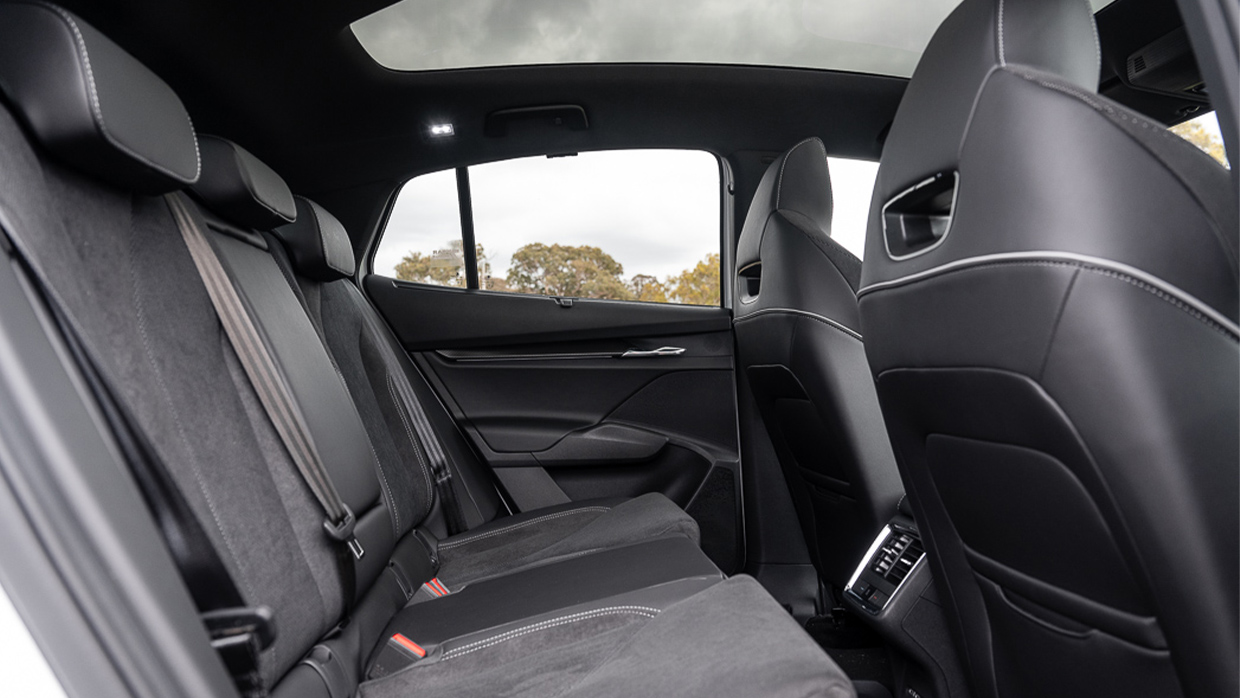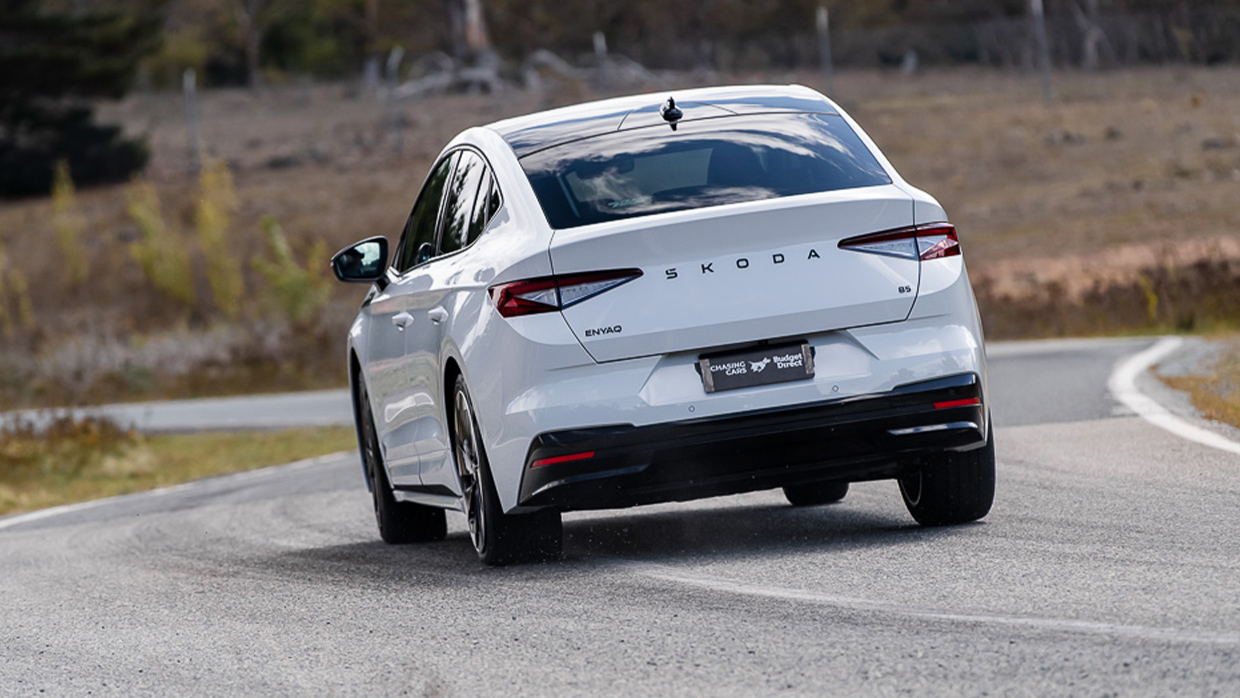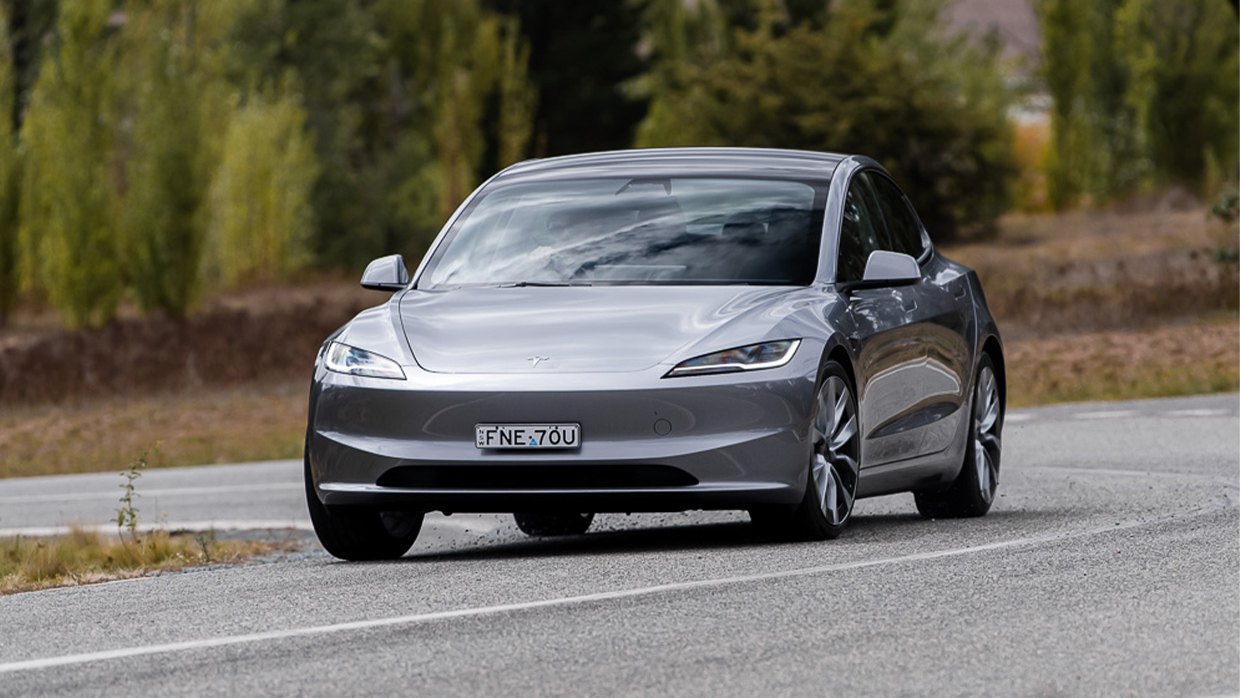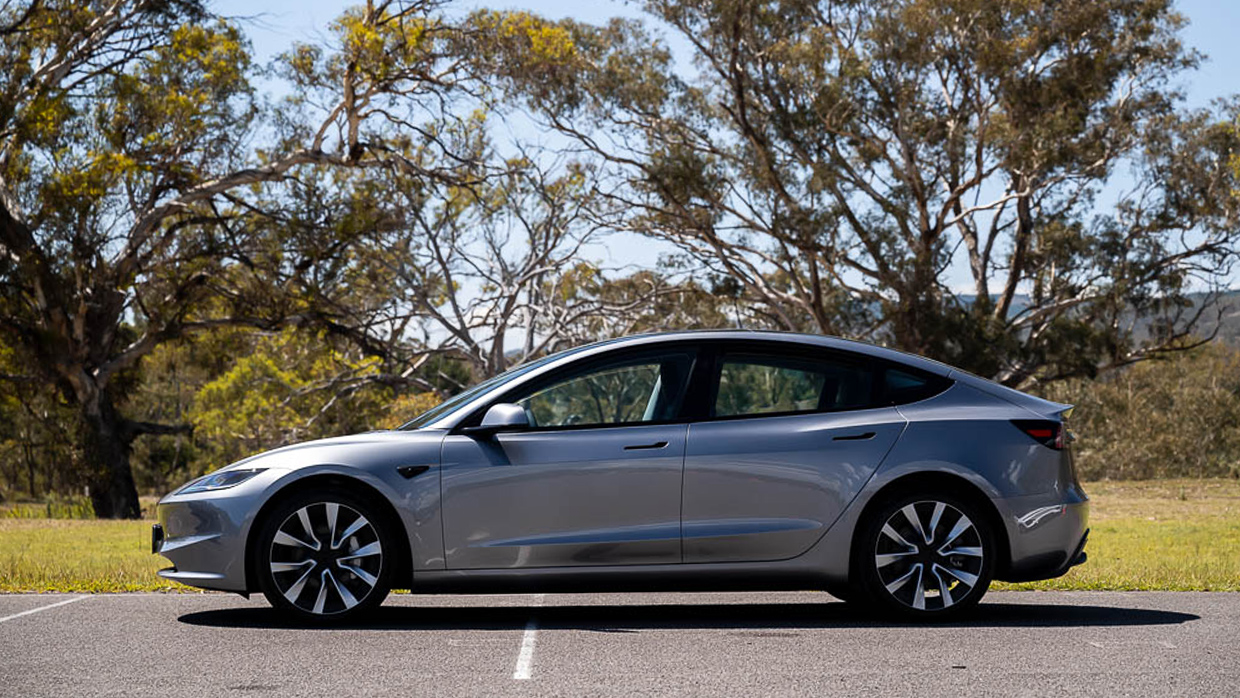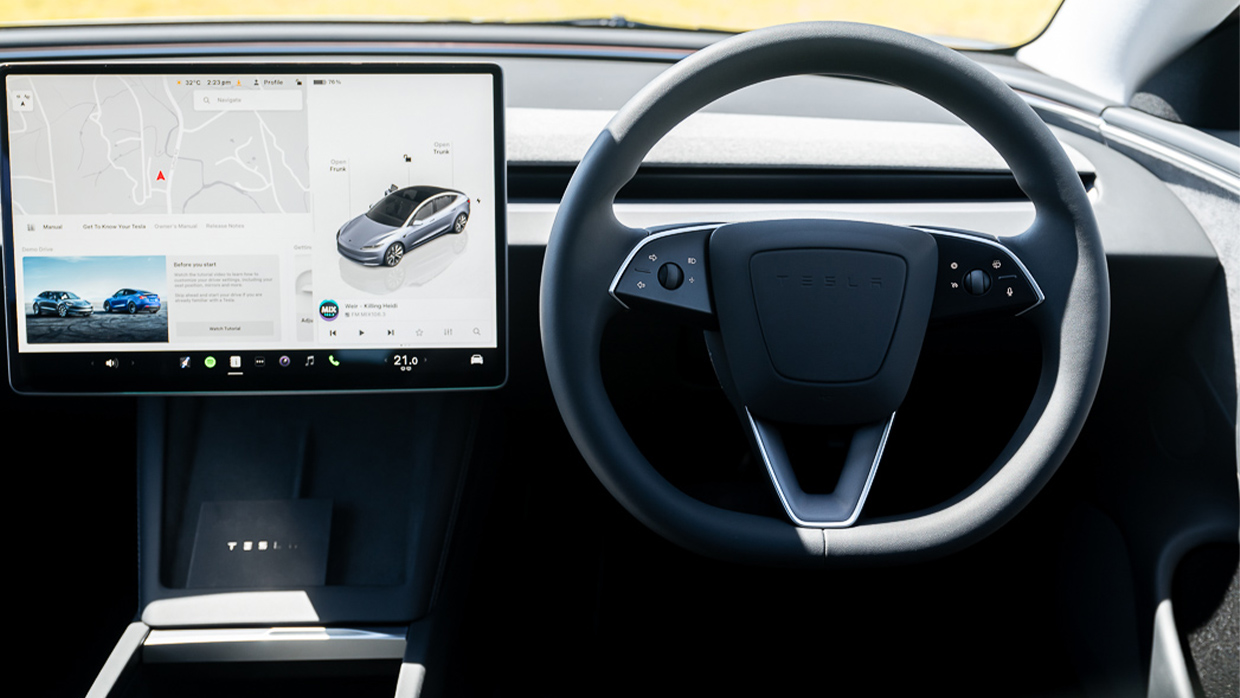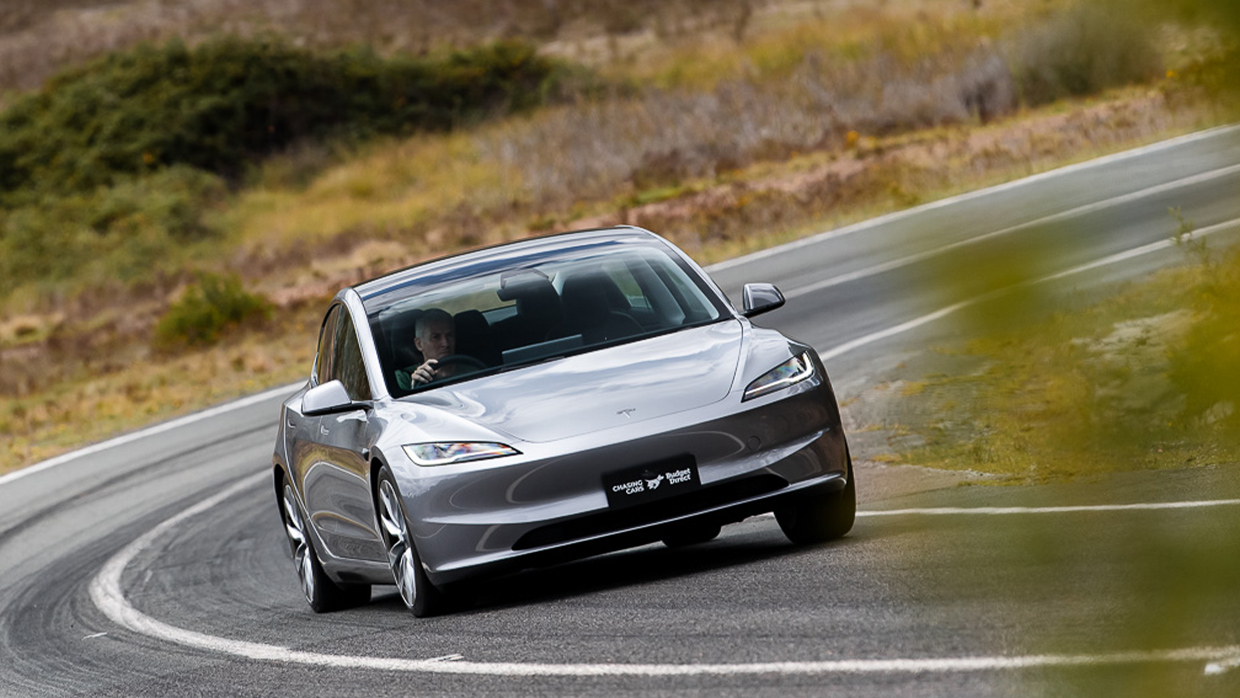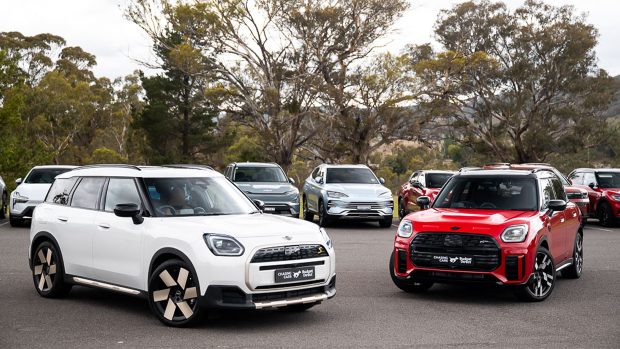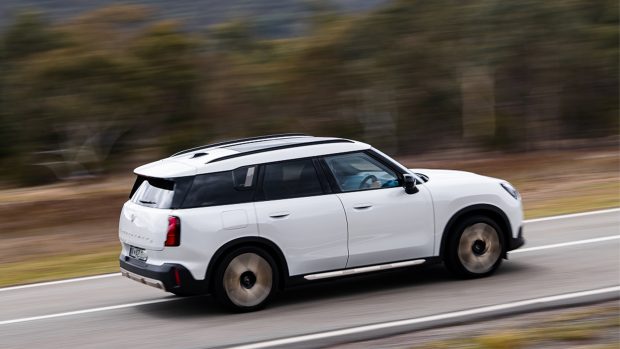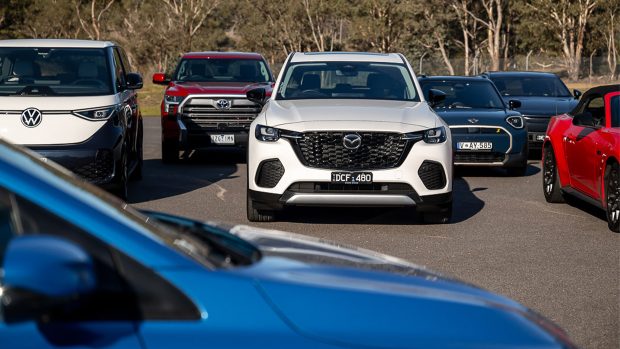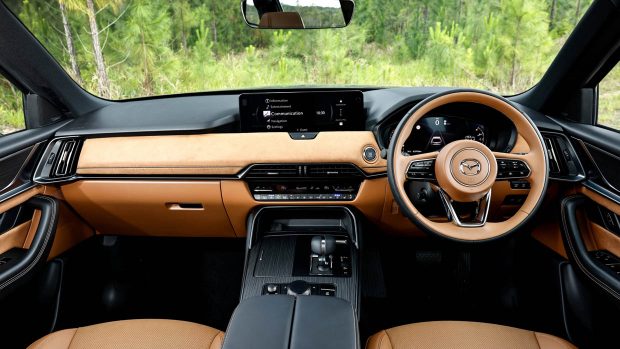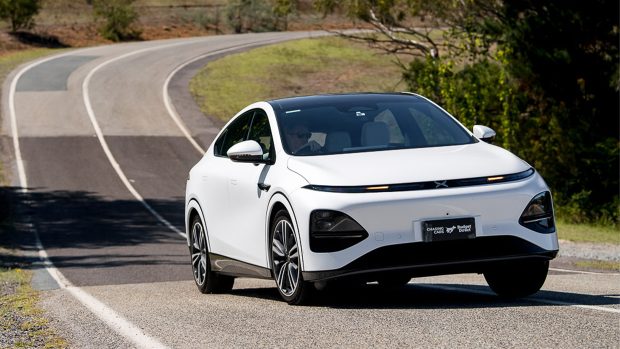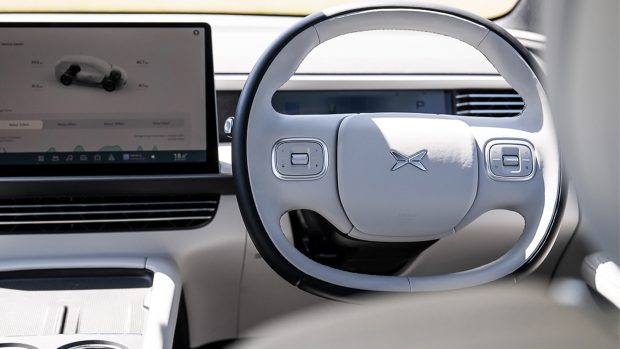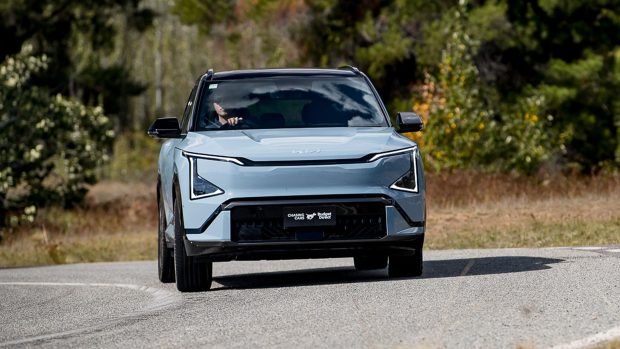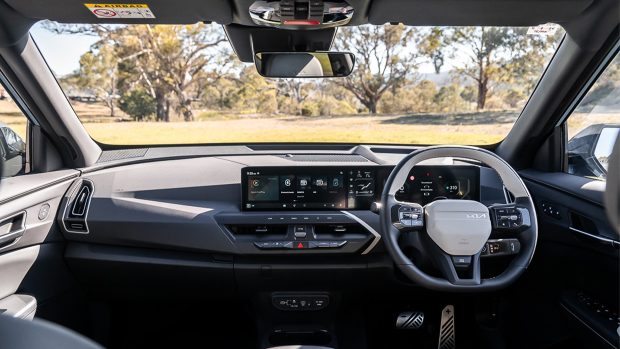-
Car Reviews
- All reviews
- Midsize SUVs
- Small cars
- Utes
- Small SUVs
- Large SUVs
- Large cars
- Sports SUVs
- Sports cars
- Vans
Latest reviews
- Car News
-
Car Comparisons
Latest comparisons
- Chasing Deals
No longer simply a choice between the Ford Falcon or Holden Commodore, the five-seat family car takes many forms and 2025 brought more variety than ever before – but which is best?
It is a challenging time to be buying a five-seat family car in Australia. While there is seemingly more choice than ever, particularly among midsize SUVs, a combination of inflation, safety regulations, and looming fuel efficiency standards have driven prices steadily upward.
If you have noticed household-name family car models creeping up in price, you are not alone. While stronger competition (especially from Chinese brands) has taken some pressure off, the era of sharp five-seat family car deals feels like it may be behind us.
All of which meant price, value and holistic achievement were front of mind for the Chasing Cars judges when it came to determining a Five-Seat Family Vehicle of the Year for 2025.
Six all-new models, plus a heavily revised Tesla Model 3, made the cut for award testing (the refreshed Tesla Model Y hadn’t landed). While extra attention was paid to total ownership cost, our usual criteria was also important: driving dynamics, ergonomics, practicality were considered.
How we judge pricing demanded a rethink this year. With retail costs climbing and full EVs (and PHEVs until March 2025) enjoying a fringe benefits tax exemption when leased from pre-tax income, the playing field has shifted behind the scenes.
For Australians using salary-sacrifice schemes to buy their next car, electric vehicles can be many thousands cheaper than petrol, diesel or hybrid equivalents—pushing traditional powertrains to prove their worth even harder.
There were fewer new combustion or hybrid models to consider, too. Carmakers spent the year focused on expanding EV ranges — and the handful of budget-friendly petrol cars that did launch (like the new MG HS) didn’t drive well enough to earn a spot.
Sportline RWD ($69,990 before ORC)
“Better late than never” is a cliché that applies to just about any of the electric SUVs the Volkswagen Group has belatedly launched in Australia — some three years after their European debuts.
But it applies especially well to the Skoda Enyaq: a Tesla Model Y rival that earned high praise from European critics as the best car yet on VW’s MEB electric platform.
Praise from Europe would mean little if the Enyaq disappointed on Australia’s broken-up suburban and rural tarmac. Thankfully, our judges found that the opposite is true: the Enyaq brings to the fore polished dynamics, deftly tuned tech and strong EV bona fides.
This svelte, well-considered family SUV feels like the vanguard of Europe’s long-overdue fightback against the wave of sharp new electric crossovers from the new world — it’s immediately intuitive, while still offering usefully long range (570km WLTP from a 77kWh battery).
Five hundred examples of the Enyaq Coupe Sportline 85 have arrived in Australia to kick off Skoda’s electrification journey. At 4653mm long, the Enyaq seats five and sits alongside two capable petrol-powered Skoda siblings: the Octavia wagon (4698mm) and seven-seat Kodiaq (4758mm).
Initially, only the sloping-roofed coupé body style is available, but a traditional wagon-bodied Enyaq SUV — featuring a subtle facelift — will arrive in Australia later in 2025.
These first Enyaqs are pre-facelift cars, but their edgy aerodynamic sheetmetal disguises a major mechanical update. Australian-spec Enyaqs come with a new-generation 210kW/545Nm rear-mounted motor (up from 150kW/310Nm in early European models). The upgrade makes it noticeably quicker, smoother, and more thermally efficient.
By taking its time, Skoda has launched the Enyaq into a crowded segment. Australian buyers can choose from more than 10 midsize electric SUVs — many from brands they may never have heard of.
While Skoda remains a niche nameplate locally, the Enyaq leans into a set of attributes sorely missing from many rivals: a mature ride and handling balance, intuitive ergonomics, well-calibrated safety systems, and a pleasant interior that feels like it has been designed for long-term use.
That sense of calm competence makes the Enyaq a breath of fresh air in 2025’s fast-moving family car landscape. Despite its inherent digital character, the Enyaq still feels wonderfully analogue. Supple, correctly-judged suspension with responsive, unfiltered control surfaces providing clear feedback.
Two variants are offered. Enthusiasts may gravitate to the dual-motor Enyaq RS, with its dual-motor 250kW punch and all-paw grip.
However, the rear-drive Sportline 85 is the sweet spot. At $69,990 before on-road costs, it comes well-equipped with powered microfibre seats, matrix LED headlights, a panoramic roof, and adaptive chassis control. A $6000 Ultimate Pack adds leather trim and a premium Canton audio system. Sadly, online connectivity is not available in Australia.
At a tenner under $70K before on-road costs, the Enyaq isn’t cheap. But, on a novated lease, the true monthly outlay can undercut significantly more affordable petrol cars — especially for those who can charge at home.
Inside, the Enyaq is premium but not showy. The Skoda is warm, inviting and smartly trimmed — aside from flimsy-feeling door grabs.
The mix of tactile materials and a good balance between physical controls (including real steering wheel buttons) and sharp digital elements, like the slick 13-inch touchscreen, show Skoda’s thoughtful design approach.
Sit down and the car is ready to go. The Enyaq pulls away in either a coasting ‘D’ or stronger regen ‘B’ mode. The liquid-like steering and tightly damped but supple chassis give the car a confidence-inspiring, intuitive feel — whether you’re commuting or heading out of town.
Second-row space is generous thanks to a flat floor and a wide bench, while the boot is large and well-shaped. Rear-seat comfort in the coupé is decent, though headroom will improve in the SUV version. Noise levels are impressively low, even without the optional sound system upgrade.
A quiet achiever of the package is the active safety suite. Adaptive cruise, excellent lane centring and unobtrusive blind spot monitoring are all here — but they don’t nag or overact. That’s in stark contrast to rivals where driver assist systems constantly demand attention.
And that really sums up the Skoda Enyaq. It’s sophisticated, mature, and well-judged. It fades seamlessly into daily life: reliable, smooth and calmly competent. Occasionally, a buyer may pause to ask themselves why everything about the car just works so well.
The answer appears to be that Skoda worked hard to make this a great family car first, and a good EV second.
Long Range AWD ($64,900 before ORC)
This year’s changes to the Tesla Model 3 were so significant they forced the judges to rethink what constitutes a generational change. Why is that important? Typically, Chasing Cars only invites all-new models to Car of the Year testing. But while the Model 3 update looks like a facelift, the revisions go far deeper.
There have been structural changes to the Model 3’s body-in-white. The way the chassis and surface parts come together has been significantly altered, improving rigidity, which in turn changes the way the car drives. Such a change affects safety, refinement, and numerous other qualities we’d usually associate with a full generational shift.
As the world’s second-best-selling EV after the Tesla Model Y (whose updated version wasn’t available in time for testing), the Model 3 earned its place — and nearly took the outright title.
In Australia, three trims are available. We tested the Long Range AWD, priced at $64,800 before on-road costs, but many buyers will find the cheaper RWD model more than sufficient, especially given its $10,000 saving. At either price, the Model 3 delivers enormous sophistication.
In fact, it’s so good that it competes directly with combustion cars costing $20,000–$30,000 more. So why didn’t it win? Partly, due to its sedan format. This is a four-door at a time when Australian families overwhelmingly prefer large, hatchback-style SUVs with greater ease of loading prams and fitting child seats.
The refreshed Model Y was on the way, but we could only test what was in front of us. For families still open to sedans, the Model 3 — and the Toyota Camry — remain worth serious consideration. But the sedan boot and lower ride height do impact day-to-day usability, and the judges had to weigh that.
Model 3 pricing is very fair, and even more appealing under a novated lease — reducing out-of-pocket costs versus cheaper combustion cars. The 2025 update also brought material quality improvements. The cabin is noticeably quieter thanks to additional insulation, while new seats, firmer and Germanic, now feature cooling alongside heating.
Tesla’s trump card remains its Supercharger network. Access comes at a cost, but these chargers work more reliably than most. There’s also Tesla’s lead in motor efficiency: the Model 3 goes further on less energy than virtually any rival, with a real-world WLTP range of 629km.
The neutral handling lacks the adjustability of a BMW i4 or 3 Series, but most drivers will appreciate Model 3’s composed, confident dynamics.
JCW Favoured AWD ($73,990 before ORC) and SE Favoured AWD ($75,990 before ORC)
Mini plans to go fully electric in the next decade but, for now, Aussie families benefit from a broad choice of petrol and electric power in the usefully-sized, new-generation Countryman.
This year’s testing featured two examples: the petrol-powered JCW Favoured ($73,990 + ORC) and dual-motor electric SE Favoured ($75,990 + ORC). Our judges preferred the latter. The EV might be heavier, but it defied expectations, demonstrating greater character and more confident handling.
If you’re not fussed by lavish equipment levels, the three-cylinder Countryman C starts at just over $50K on-road. But the further you travel up the range, the nearer petrol and electric pricing gets. And compared to other semi-premium EVs, the SE Favoured is good value.
On the road, both Countrymen demonstrate classic Mini suspension tuning — taut and eager — with a newfound maturity reflecting the Countryman’s growth. It’s now nearly Volkswagen Tiguan-sized, offering solid interior room and usable boot space, though the EV’s raised floor slightly compromises rear comfort.
Inside, the latest Countryman leans heavily on BMW X1 architecture, think similarly high-quality materials and features with a Mini twist: playful trim, interesting materials, round screens, and colourful detailing make it feel more distinctive.
The result is a family SUV with flair. The Countryman combines expressive design, accessible electrification, affordable servicing, and intuitive tech — including strong app connectivity. For buyers who want something a little different but still practical, it’s a strong, if offbeat, contender in the premium small SUV space.
SL FWD ($53,990 before ORC)
Is the Toyota Camry still a family car? That was a genuine question for the judges. Ultimately, the answer was yes. While more commonly associated with taxis and rideshare, many Australian families still choose it, and for good reason.
Like the Tesla Model 3, the Camry’s sedan-only body limits its practicality compared to an SUV. But that format brings key benefits — especially fuel efficiency.
The Camry Hybrid uses noticeably less petrol than a RAV4 or Kluger, and its new fifth-generation hybrid system is smoother and more efficient than before. Achieving sub-5L/100km is easy, and the 50-litre tank delivers real-world range of over 1000km — far greater than any EV on test.
That speaks to a wider trend: hybrids are enjoying a quiet renaissance. While EVs make sense for some, hybrids like the Camry are still a better all-round fit for many households.
What surprised the judges most was the Camry’s dynamic polish. This latest version rides beautifully, and its front-drive chassis rewards confident driving in a way previous Camrys didn’t. It’s no sports sedan, but it’s no longer just about comfort and economy either.
Inside, it’s not a luxury car, but it is comfortable, spacious, and well-equipped. Our SL test car showed just how much value the Camry offers — especially when compared with the RAV4. For families sticking with sedans, the Camry remains a smart, efficient, and satisfying choice.
Mazda CX-70 GT G50e AWD ($76,220 before ORC)
Mazda’s grand expedition into premium SUVs got off to a rocky start. The early CX-60 suffered from poor suspension tuning and high prices. But several adjustments later, the arrival of the wide-bodied CX-70 completes the four-strong lineup — and it might be the most compelling effort yet.
While the CX-70’s pricing starts in the high $70,000 range, it’s not actually an outlier to Mazda’s pricing adjustments: there is simply no base model here. The ‘70’ is a premium-only proposition aimed at buyers who expect generous equipment, strong performance and a level of polish.
Tough styling, standard turbocharged inline six-cylinder power, AWD, and generous spec go some way to justifying the outlay. The CX-70 lands in BMW X5 territory — on intent, if not quite in execution.
The Mazda is powerful, capable, and comfortable. But our judges agreed it still lacks the refinement and polish of a true luxury SUV. Its American-built, Bavarian-badged target is considerably better damped and more composed.
That said, we enjoyed the Mazda’s rapid acceleration, charismatic engine note, and direct steering. The chassis has genuine talent, but the ride remains too taut — particularly at the rear, where rebound damping is overly tight. Occupants feel it unless you’re pressing on.
Still, the CX-70 is a slick, rewarding SUV that feels like a “deep cut” for Mazda fans. If you love the CX-5 turbo, this might be your natural upgrade. And with most German SUVs now commanding six-figure sums with options, Mazda’s value proposition is hard to ignore.
Long Range RWD ($59,800 before ORC)
Few models from all-new brands made it into Chasing Cars Car of the Year testing. Not due to badge snobbery, but because many simply fall short dynamically. The XPeng G6 is a rare exception. It’s genuinely fine to drive, but that’s not its trump card.
That would be price. While not the absolute cheapest among emerging midsize electric SUVs, the G6 Long Range tested here doesn’t crack $60K before on-roads despite a large battery, a long list of standard features, and 570km WLTP range. That’s nearly $10K less than a Tesla Model Y. The judges were intrigued.
Yes, the G6 is generic in look and feel but the egg-like shape contributes to its efficiency, and the minimalist interior (available in white or black) is modern and mostly user-friendly. A coming update will ditch the fiddly touchscreen-controlled air vents, one of few real ergonomic flaws.
Early impressions were lukewarm. But during back-to-back testing with rivals, the G6 quietly rose through the ranks. Dynamically, the XPeng is a clear step ahead of the Kia EV5, with better ride comfort, chassis control, and active safety tuning.
For a brand-new entrant from a brand-new marque, the G6 handles Australian roads impressively well. Its limits are easy to find but are clearly communicated, and that clarity builds confidence. Behind its quirky one-spoke wheel, the G6 delivers a calm, relaxing driving experience.
The only real question is longevity: will XPeng survive in Australia? The G6 proves it deserves to but the answer, as always, will come down to time and trust.
Air Long Range FWD ($61,170 before ORC) and GT-Line Long Range AWD ($71,770 before ORC)
Something has gone wrong with the driving dynamics of the China-built EV5: harsh ride quality, wayward handling, overzealous safety systems, terrible efficiency and remarkably high pricing combine in disappointing fashion.
Perhaps because it is the only Kia to yet use a Frankenstein platform that throws together bits of Sorento with watered-down electrical cabling from an EV6.
There are upsides to the EV5, of course. Here’s an electric SUV from a known Korean brand; it uses ultra-safe LFP battery packs; the cabin tech is easy to use; excellent packaging means a spacious interior, boot and frunk; it also looks quite handsome. The problems only start when you drive this nominal Model Y rival.
Weird ride-handling tuning betrays obvious cost-cutting, placing the EV5 in harsh and unflattering contrast to Kia’s hugely polished (and even more expensive) EV6 and EV9, which use full-fat 800-volt platforms.
The 400-volt EV5 is much slower to charge, while apparently poor aero means appalling highway consumption and road-tripping range barely better than 400km.
Then there’s the effective refusal of Kia head office to acquiesce to Kia Australia’s pleas to reduce the sensitivity of the brand’s overzealous speed warning and eye-tracking attention systems, which are among their most obnoxious in the EV5 — despite not even being required (at this level of sensitivity) in Australia. Frankly, this is lazy and agitating.
The judges had high hopes for the EV5 but simply put, it’s a rare miss from a brand that has thrilled with better-than-expected EV, hybrid and combustion product in recent years.
Latest comparisons
About Chasing cars
Chasing Cars reviews are 100% independent.
Because we are powered by Budget Direct Insurance, we don’t receive advertising or sales revenue from car manufacturers.
We’re truly independent – giving you Australia’s best car reviews.
